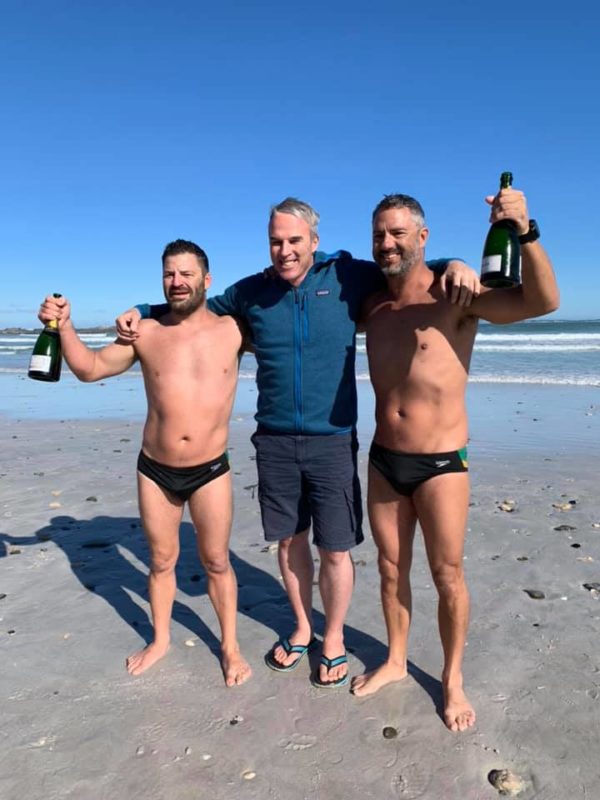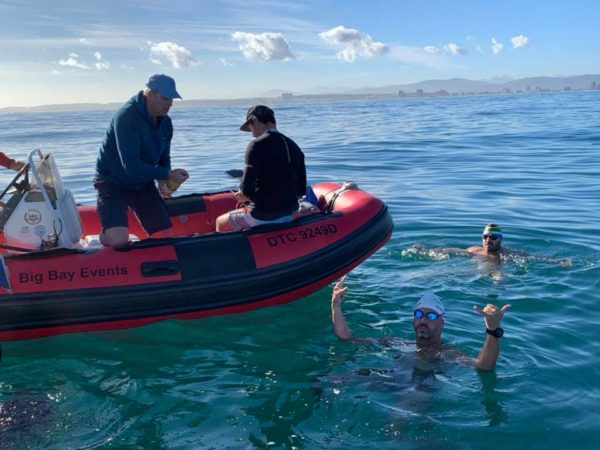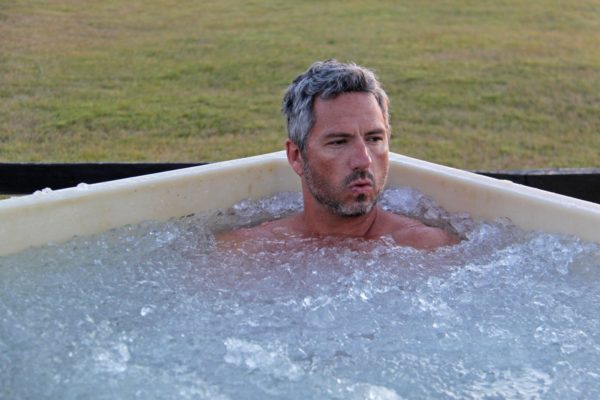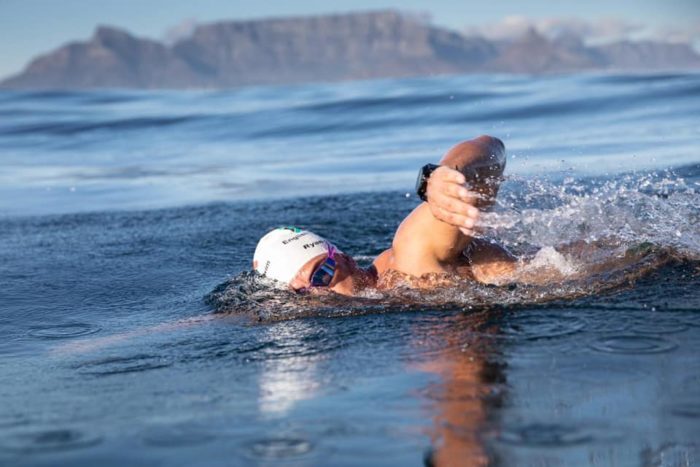Inspirational speaker and extreme swimmer Ryan Stramrood has become the second person to swim 100 crossings between Robben Island and the mainland, in a time of two hours 18 minutes on Thursday May 23.
He follows his late friend and swimming companion Theodore Yach, who made the swim an incredible 108 times. Ryan dedicated his 7,4km swim to Theo.
“I trained with him often and swam a number of Robben Island crossings with him, including his 100th. Theo swam my 50th crossing with me in 2015 and would have joined me on my 100th today.” he said.

“Totally elated to be on the beach. No Robben Island Swim is ever easy. Today was my 100th and I’ve made it. It was tough out there, it was cold and it got choppy, so I am very very happy.” said Stramrood.
Fellow extreme swimmer and environmental campaigner Lewis Pugh accompanied Ryan in a support boat and said, “It’s an incredible achievement to swim 100 Robben Islands. I have been swimming for 32 years and I have never done an easy Robben Island, never once, and he has now done 100. The thing about Robben Island is that it’s always unpredictable: you think you are going to do two hours and conditions change and it takes three hours; you think you will take 3 hours and it becomes 5 hours. It shows Ryan has got real mental fortitude and ‘vasbyt.’”

Ryan has swum a number of formidable routes and distances since his first Robben Island crossing in 2003, including the World First Official Ice Mile in Antarctica in -1C water temperature.
He was also a part of the team for the World First USA to Russia Relay (mainland to mainland), and he swam across the Straits of Gibraltar from Europe to Africa. For the average Joe, as Ryan describes himself, swims like these require an incredible level of physical and mental fortitude.
After his Ice Mile swim in Antarctica in 2014, he was encouraged to share his learnings from his extreme swims. He now uses the insights gained to inspire others in his second career as a speaker, “I began to realise after my first Robben Island crossing just how unbelievably powerful the human mind is. It is set to a default function to protect us – to keep us safe – and I realised just how overprotective this powerful tool is. But we have the power to challenge it – in all aspects of life – and unlock a certain magic that few will ever find.” he said.

The first crossing took place in 1909 and hundreds of swimmers have completed it since then. Ryan encourages those who are contemplating doing the swim.
“The Robben Island swim is a fantastic personal goal to have and with regular training and the right attitude, anyone can do it. You simply have to set the goal, you have to overcome that ‘natural defence mechanism’ in your head that says ‘Too hard for me’.” says Stramrood
Fundraising:
To commemorate this 100th crossing, profits from the sale of the first 100 pairs of Ryan’s slip slops are being donated to Arafat Gatabazi to assist in his work, teaching Cape Town children from a street home and orphanage to swim, in an effort to encourage them off the streets. Gatabazi is a refugee from the Congo who hitchhiked to SA when he was 17 years old after fleeing his home during a raid. He was included in a swimming programme while staying at the Homestead for street children and is now focused on sharing the therapeutic benefits he received from learning to swim.
Gatabazi explains: “When you live in a children’s home, it is always difficult to be positive but when you have someone that believes in you, it changes the way you see yourself. This is what swimming did for me and now I am trying to share it with other kids in similar situations hoping to make a difference in their lives.”
The slip slops can be purchased here.
The logistics of a Robben Island Swim:
Andrew Chin, Chairperson of the Cape Long Distance Swimming Association explains what happens in the background at a Robben Island crossing.
“There is a lot of behind the scenes stuff that happens. Boats need to be organised, seconds need to be found and permissions obtained. To be officially recognised by Cape Long Distance Swimming Association, swimmers need to adhere to certain rules. These include the right attire, speedo briefs (or similar) and a single cap, no assistance from the boat such as touching the boat, and having the correct boating procedures followed.”
Website: www.cldsa.co.za
For further information on Ryan Stramrood visit www.ryanstramrood.com

